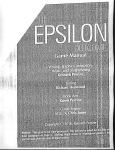Download TROOPER NEWS - Oregon State Police Officers Association
Transcript
1 THURSDAY September 29, 2011 TROOPER NEWS WWW.OSPOA.COM Can You Write? We are looking for a few good men or women to contribute to the Trooper News. Are you a good writer? Or do you have fantastic story ideas? We need you. Please email amanda@ asmithimages.com with your ideas or stories! Gotta Snap? Our pages of the newsletter and magazine are starting to look a little plain. Can you help? Send us a decent sized photo and we will publish it in the trooper newsletter or the magazine. Come on show us those snazzy frames you have of your awesome co-workers doing exactly what they do best. Email them to Amanda@ asmtihimages.com and start looking for them in upcoming issues. BART police arrest a protester during last Monday's demonstration at san Francisco's Civic Center Station. BART blocks cellphones to hinder protest By ELISA MALA and J. DAVID GOODMAN SAN FRANCISCO — Transit officials blocked cellphone reception in San Francisco train stations for three hours to disrupt planned demonstrations over a police shooting. Officials with the Bay Area Rapid Transit system, better known as BART, said Friday that they turned off electricity to cellular towers in four stations from 4 p.m. to 7 p.m. Thursday. The move was made after BART learned that protesters planned to use mobile devices to coordinate a demonstration on train platforms. The tactic drew comparisons to those used by the former president of Egypt to squelch protests demanding an end to his authoritarian rule. Authorities there cut Internet and cellphone services in the country for days earlier this year. “BART officials are showing themselves to be of a mind with the former president of Egypt, Hosni Mubarak,” the Electronic Frontier Foundation said on its website. The American Civil Liberties Union criticized the tactic, saying on its blog that it was the “wrong response to political protests.” BART officials were confident the cellphone disruptions were legal. They said in a statement that it’s illegal to demonstrate on the platform or aboard the trains, and that it has set aside special areas for demonstrations. The demonstration planned for Thursday failed to develop. “We had a commute that was safe and without disruption,” said BART spokesman Jim Allison. The demonstrators were protesting the July 3 shooting of Charles Blair Hill by BART police, who claimed Hill came at them with a knife. Several people were arrested when a July 11 demonstration disrupted service during the rush-hour commute and prompted the closing of BART’s Civic Center station. Sheriff: Facebook boast leads to arrest Authorities noticed a Facebook post by a man boasting about eluding officers Associated Press YAKIMA, Wash. — A suspected reckless motorcycle rider has discovered the law’s long arm now reaches into cyberspace. The Yakima County Sheriff ’s office says they tracked the 19-year-old man down via Facebook. well as a photo on the page of a motorcycle similar to the one they sought. Deputy Chris Gray says early Monday in a release that the incident began when a man on a motorcycle outran pursuing deputies late last week near Moxee, just east of Yakima. Gray says that when the suspect was rousted at 4 a.m. Saturday by deputies with both a search warrant and a printout of the page, he acknowledged he was the rider. Authorities later noticed a Facebook posting by a man boasting about eluding officers, as The man, whose name was not released, has been charged with reckless driving and other infractions. THURSDAY September 29, 2011 WWW.OSPOA.COM 2 Police urge holster use after man shoots own penis A bullet accidentally fired from a pink handgun struck the penis of an Arizona man visit to a grocery store on Sunday, Joshua Seto, 27, immediately began bleeding heavily, and fiance Cara Christopher promptly called 911, according to USA Today. By PoliceOne Staff CHANDLER, Ariz. — An accidental bullet struck the penis of an Arizona man who was carrying his fiance’s gun in the waistband of his pants. Christopher was instructed to use pressure to stop the bleeding and to avoid looking at the wound -- which she did anyway. “I did look at it,” Christopher said. “It’s pretty bad.” When the pink handgun fired during the couple’s FBI launches app to help find missing children Information from the app can be emailed to authorities in an emergency By Joy Lukachick Chattanooga Times Free Press CHATTANOOGA, Tenn. — Authorities compare the launch of the first FBI app to help parents locate missing children to that of the modern fingerprinting kit. “We’re trying to improve efficiency,” FBI spokeswoman Stacie Bohanan said from Knoxville. “Typically, when a child goes missing, the first few minutes are crucial.” The FBI Child ID app -- currently available only on the iPhone -- allows parents to upload photos and descriptions of their children. The information can be emailed to authorities in an emergency. Often when children go missing, it takes time to get photos to authorities who then alert the public, Bohanan said. The app is intended to streamline the process. Parents already are used to police offering to fingerprint children at community events. The idea is to help identify a child found miles away from home, said Calhoun, Ga., police spokesman Lt. Tony Pyle. But Bohanan said convincing parents to think about preparing for the possibility of a missing child always is a challenge. “We always say, ‘We hope you never need it,’” she said. The app’s information is accessible only to the mobile phone user, Bohanan said. The FBI and Apple, which makes the iPhone, don’t store the photos and personal information. Eventually the app -- built and funded through the FBI’s Office of Public Affairs -- will be expanded to other mobile devices, officials said, but they didn’t have a date. Other features on the app offer tips to parents on how to respond if a child goes missing and a button to call 911. Police are warning armed residents to exercise caution when handling firearms. “Always treat firearms as though they are loaded, Chandler Police Detective Seth Tyler said. “If you are going to carry a handgun on your person, use a holster, not your waistband.” It was unclear whether Seto had been released from the hospital or if there will be permanent damage, police said. San Diego officer dies; suspect left suicide note An apparently unprovoked attack killed Jeremy Henwood By Elliot Spagat Associated Press SAN DIEGO — An officer shot in the face in an apparently unprovoked attack died Sunday, and investigators found a suicide note left by the suspect who fired the gun, San Diego’s police chief said. Jeremy Henwood, a four-year veteran of the department, died a day after being shot while sitting alone in his patrol car at a San Diego intersection, Chief William Lansdowne said at an afternoon news conference at police headquarters. “I could tell you that this was a senseless killing ... this was an assassination,” Lansdowne said. The armed suspect, Dejon Marquee White, 23, was tracked down by police after the attack Saturday and shot to death by officers as he tried to avoid arrest. Investigators said they have no motives for the shooting of the police officer. White wrote a twopage suicide note discovered at his apartment, but it didn’t say how he was going to kill himself or why, according to police. White was a suspect in another shooting earlier Saturday at an In-N-Out restaurant 14 miles away in El Cajon and had eluded police after a high-speed chase. Shortly after the restaurant shooting, Henwood was stopped at an intersection when a black Audi with temporary plates came alongside. “According to witnesses, the suspect vehicle pulled up on the left side of the officer’s vehicle, pointed a gun out of the passenger window and fired at the officer,” a police statement said. Witnesses gave first aid to Henwood until paramedics arrived and transported the injured officer to a local hospital. Henwood, 36, was a captain in the U.S. Marine Corps Reserves. He had recently returned from a yearlong deployment in Afghanistan. A half hour after the attack, officers tracked down the Audi to an apartment complex and saw a man carrying a shotgun get in the car and start to drive away. Several squad cars blockaded the road and converged on him to make the arrest. “The suspect grabbed the shotgun and several officers fired their weapons at him,” the statement said. The Audi rolled backward down the street and crashed into a fence. Officers pulled White from the car and called for paramedics. He was pronounced dead at the scene. A neighbor at the apartment complex told police that White told her that he had shot a police officer. Police believed a second suspect was holed up inside White’s apartment but found the unit was empty. Investigators said later that White was acting alone. The victim of the shooting at the restaurant in El Cajon was sitting with his girlfriend in his vehicle in the parking lot when he was approached by a man carrying a shotgun. The assailant fired one round at the victim, Martin Hanna, striking him in the face, before fleeing in the Audi, police said. Police said Hanna is expected to survive. Minutes later, an officer who had no knowledge of the restaurant shooting spotted the Audi speeding and gave chase but abandoned the pursuit as it reached speeds of 100 mph. Investigators have not been able to establish any relationship between White and Hanna. White had a minor criminal record that included resisting arrest and petty theft, Lansdowne said. “This tragedy is another grim reminder that our police officers put their lives on the line every day to protect our community, and we are grateful for their courage and sacrifice,” San Diego mayor Jerry Sanders said in a statement Sunday. Henwood’s parents arrived in San Diego Sunday from Texas. Funeral arrangements were pending. THURSDAY September 29, 2011 WWW.OSPOA.COM 3 NYPD Sgts. to get ‘tens of millions’ in overtime Thousands of current and retired NYPD sergeants will be affected by the court ruling 2001 to some 8,000 current and retired sergeants. By Philip Messing The New York Post While the city had insisted that the “plaintiffs’ primary duty is management,” according to court documents, a “friend of the court” brief filed by then-US Labor Secretary Elaine Chao claimed that the sergeants were “first responders” who, therefore, deserved overtime - helping to sway the US Second Circuit Court of Appeals to issue its Aug. 5 ruling to reverse the verdict. NEW YORK — Thousands of current and retired NYPD sergeants are due “tens of millions of dollars” in overtime pay, thanks to a federal appeals-court ruling this month, sources say. The hotly contested case, Mullins vs. City of New York, was the result of a 2004 lawsuit brought by the Sergeants Benevolent Association challenging the way the department had awarded overtime since The city was initially cleared after a five-day jury trial in 2009, but the sergeants appealed and won. The union argued that while sergeants are guaranteed overtime under their collective-bargaining agreement, the OT often must be approved ahead of time and that, even then, the workers are persuaded to accept time in lieu of cash or to not even file overtime requests at all. The sergeants said that when they accepted the deal of time-and-a-half comp instead of cash, they still often had difficulty getting time-off requests approved because the department was operating with reduced staffing levels. As a result, many ex-sergeants left the NYPD with more than the maximum 480 hours of “compensatory time” the city is required to pay for in cash, meaning they often had to “eat” hundreds of hours of additional comp time for which they were never reimbursed, sources say. “I feel we’ve been vindicated,” said SBA President Edward Mullins, who is named as the suit’s plaintiff. Motorola and General Motors strive to create the ‘ultimate patrol vehicle’ At APCO 2011 in Philadelphia, Motorola displayed a new Chevrolet Caprice PPV and a Chevrolet Tahoe PPV with a wide array of integrated Motorola devices The squad car is a law enforcer’s mobile office, and in recent years, so much equipment has been crammed into the cockpit of a police vehicle that one might think the situation comical (if it weren’t so potentially dangerous). Working closely with General Motors, engineers from Motorola have created an innovative solution which ties together a variety of Motorola’s technology offerings in an effort to make the Chevy line of patrol vehicle safest possible mobile environment for the police officer. On display at APCO 2011 in Philadelphia earlier this month, I was able to check out a Chevrolet Caprice PPV the folks from Motorola were showing off, and see for myself some of the very interesting officer safety enhancements they’ve recently brought to market, particularly the O9 Control Head. First and foremost is the fact that all the devices that can be moved to the trunk have been moved to the trunk, making the cockpit space considerably less cluttered. For example, the computer boxes for the MVX1000 Digital In-Car Video System, the MW810 Mobile Workstation, and the APX 7500 Multi-Band Mobile Radio are all neatly tucked away in the trunk. The entire setup is completely modular, so in the unlikely event that one of those components needs to be serviced, a swap out with a replacement device is all but instantaneous. enhancement is the design of the user interface itself. It’s smaller and more ergonomic than what one now finds in a typical cop car. It’s also got nice, big buttons that are easily distinguishable by touch, pretty much negating the need to look down from the windscreen during highstress events such as a pursuit. “If you look into a police car today you’ll see a lot of equipment — most of it disjointed — that don’t work very well together,” explained Eron Usow, a Motorola representative who spoke with me from inside the squad car on display. “One of the things we did when we looked at this control head is to put functions into sections.” The siren controls, for example, are grouped together in the top left area of the control head — the area of the device that is nearest to the driver — in an intuitive group of three buttons. “The O9 makes every action more efficient, enabling users to focus on the mission not the technology,” said the information card Motorola created for the APCO display. The one-touch emergency button is well-placed at the top right of the device, immediately adjacent to the controls for the takedown and alley lights. The O9 also includes five programmable buttons across the bottom of the device that can be set to control with a single touch a number of frequently-used communications and warning functions that previously may have taken a number of user inputs. Innovative Design, Intuitive Controls And if you don’t want to touch the device at all, you have that option too. Voice Activation and PTT Not unlike the setup I’d seen a few months ago from Rockwell Collins, another significant officer safety “What’s important about the system that you see here is that you also have voice activation” explained Usow, as he commanded the system to switch from the installed PremierOne Mobile CAD system to the Real-Time Video Intelligence (RTVI) live video stream being beamed to the car via the VML700 LTE Vehicle Modem. The voice activation system, said Usow, can even control the locks for the long guns—those locks, by the way, can also be completely deactivated by the dispatch center in the event that an offender decides to commandeer the vehicle for a “joy ride.” My favorite feature, however, is decidedly low tech — the push-to-talk button on the steering wheel. “All General Motors vehicles — the Tahoe, the Impala, and the Caprice — will be available with this push-to-talk button as an option right from the factory this model year,” said Usow. To my knowledge, this is a first (why no automobile manufacturer up to now has done this is beyond my understanding) so kudos to both Motorola and GM for making this option a reality. We’ll see how long it takes for other car makers to place a call to Motorola business development people. I’ve been duly impressed by the Motorola folks many times in the past — they’re practically famous for their trade-show displays in which they abuse their gear (like when they encased a radio in ice) — but what I saw at APCO 2011 is a whole new level of cool. Although I resisted the temptation to beat my fist on their nice new stuff, I would bet a significant sum of money on the hunch that I’d break my knuckles long before I could break the rugged new offering from our friends in Schaumburg, Illinois. THURSDAY September 29, 2011 WWW.OSPOA.COM 4 Wyo. sheriff praises deputy who died in rescue Searchers found the body of Converse County Sheriff’s Deputy Bryan Gross on Sunday morning By Ben Neary Associated Press DOUGLAS, Wyo. — A Wyoming lawman who died last week trying to rescue a girl from a swollen river made the selfless decision to risk his own life, his supervisors said Monday. “He made a decision to do what he did, and he did it to the best of his ability,” Becker said. He said Gross was one of 14 patrol officers in the department. Becker and others in law enforcement have been mum about why the girl was in the river. However, Douglas City Administrator Steve Henning said last week that the girl, who he said was 14 years old, had jumped into the river after becoming distraught over her boyfriend. Searchers found the body of Converse County Sheriff ’s Deputy Bryan Gross on Sunday morning about 1.5 miles downstream from where he entered the North Platte River. Gross, who grew up in Michigan, had worked as a Douglas police officer for a few years before recently joining the sheriff ’s department. Becker said Gross worked as a drug officer and handled a trained dog named Gus. Gross was one of several rescuers who went into the river after the girl on Thursday evening, in the eastern Wyoming town of Douglas. Henning said Gross had gotten married within the past month or so to a woman who had worked as a receptionist for the city. Other rescuers using a canoe steered the girl to the bank and she later was treated at a local hospital. Officials say she wasn’t injured. Becker said neighboring Natrona County Sheriff ’s Office is investigating the incident and will have a report completed in coming weeks. He said he doesn’t expect any criminal charges, but said the investigation will document what happened. Sheriff Clinton B. Becker told reporters Monday that Gross’ actions went beyond the call of duty. Gross’ death has hit people in Douglas, a city of about 6,000 people 50 miles east of Casper. “It’s just tragic,” said Jim Young, proprietor of the City Shoe and Saddle Shop on North Second Street who said he knew Gross. “I guess he did what he needed to do,” Young said of the young lawman’s decision to enter the river, which has been running high with runoff from snowpacked mountains. Undersheriff Don Schoenleber said searchers from several agencies had searched 24 miles of the North Platte before Gross’ body was found. Becker said the department will consider issuing life preservers for deputies to carry in their patrol vehicles. “We don’t do a whole lot of our work by the river — 95 percent of our work is out on the prairie,” he said. “But on occasion such as this incident, you just never know.” Funeral services for Gross are scheduled for Saturday at the local high school. Copyright 2011 Associated Press President’s Note As the fall descends upon us we have a lot of stuff going on here at OSPOA. The first and foremost thing is contract bargaining. As most of you know your bargaining team and the State of Oregon fell short of a tentatively agreed upon contract. What we did come to was an offer that is going out for a possible ratification. The only difference between a tentatively agreed upon contract and where we are now is the fact that the bargaining team was split. As I explained when I traveled around the state, I support this offer, as do many of the members on the bargaining team. With that said, I know that some of our members are going to vote not to ratify the contract. Once again I want everyone to know that none of us are thrilled with the offer. It did meet most of our goals going into bargaining and I believe that in light of the economy this is not a bad offer. I just want everyone to honestly evaluate the offer and to cast their vote. The risk is great if we move to arbitration and the reward is minimal if we win arbitration. I don’t believe we will ask for substantially more than is being offered at this time. With that being said we will have to gauge our last best offer against the economy and what is reasonable near the end of the year when we have to declare our last best offer. Rest assured, if we go to arbitration we will ask for as much as we think we can win but not more. I will also give you my word that we will be prepared and ready for war when we walk into arbitration if it goes that way. In each ballot I provided much greater detail. Please read the information and decide what is best for you. The other item I want to discuss is a trend that has developed within the department relating to their internal investigations. It appears that many of our members are being interviewed in investigations that do not relate to them. this is that when you are interviewed, even if you are not the subject of the investigation and all conduct was off duty the department will assert that you must comply with department policy 300.1 Code of Ethical Conduct. And if you are interviewed consensually, meaning that you are not ordered to give a statement, and are later viewed as having withheld information or given false information to the interviewer you will be subject to a 24 hour notice, a compelled statement and discipline. The ramifications of this situation are that if you are viewed as being untruthful you may be terminated for this offense. At the very least you will be fighting for your credibility and ability to testify in court in the future. I don’t have any heartburn with the fact that you have to tell the truth. These investigations are sometimes criminal in nature, but sometimes they are personnel related. They span the spectrum from hostile work environments to sexual harassment. The problem I have is the rules need to be explained on the front end. You should not be led down the path of being talked into giving a statement about your personal life that may be very private and then later disciplined when it is learned that you minimized your personal conduct away from your employment at OSP. The reason I want to comment on I have asked the Office of Professional Standards to advise me when these interviews are taking place and I have been told that they would like to include me but they are afraid that I will tell you not to talk to them. I understand their position but I think anyone being questioned in an investigation needs someone to advise them. I have assured them that my advice would always be to be completely honest if you give any statement. My advice would also be that if the information is personal in nature and off duty conduct that it probably is none of their business. If the department wants to compel you to give a statement they have every right to order you to talk. By being ordered anything you say can be used against you in a personnel investigation. It can’t be used against you in a criminal process. If you are asked to give a statement please call your OSPOA rep, your region rep or myself. We are happy to help. Until next month…Take care of each other. Darrin THURSDAY September 29, 2011 WWW.OSPOA.COM Pennsylvania man blames ‘Batman’ for cop car theft attempt The officer drew his gun and ordered the suspect out of the car Associated Press PITTSBURGH — Pittsburgh police say a man tried to carjack a plainclothes officer near filming for the latest Batman movie — and allegedly told him it was part of the script. Detective Robert DiGiacomo was in an unmarked vehicle around 7:15 p.m. Saturday, looking for a suspect in an assault. That’s when police say a man opened the car door, sat down and told the officer to get out. 5 The officer drew his gun and ordered the suspect, 21-year-old Micah Calamosca, out of the car. He says the suspect told him he was part of filming for “The Dark Knight Rises” and that taking the vehicle was in the script. Calamosco was taken into custody and faces a charge of robbery of a motor vehicle. It’s unclear if he has an attorney. SWAT exercise ends in officer’s collapse, death Officer Daniel Ackerman passed away early Saturday By PoliceOne Staff BUENA PARK, Calif. — Police Officer Daniel Ackerman passed away after collapsing during a SWAT training exercise Friday. According to witnesses, the full-time officer from Irvine, California seemed fine at the start of the required semiannual strength and endurance test. Ackerman completed the course within the required time, but then suddenly seemed spacey and unresponsive. He was taken to a local hospital where he received treatment for fatigue before passing away early Saturday morning. Officer Ackerman had served with the Buena Park Police Department for six years, had previously served as a reserve officer for four years, and had recently been selected for SWAT. “He wanted to become a part of SWAT, so we can honestly say he died content,” his sister told the Los Angeles Times. “I just wish he would have gotten more of a chance to experience his goal.” Rapper could face charges after ‘flashcalls’ overwhelm sheriff’s station The Game sent tweets with phone number of station, which led to hundreds of prank calls Associated Press LOS ANGELES — A rapper could face criminal charges after a tweet from his account incited a telephone flash mob that overwhelmed the emergency phone system at one of busiest stations of the Los Angeles County sheriff ’s department, the agency said Saturday. The sheriff ’s department alleges The Game tweeted the Compton station’s phone number Friday and told his 580,000 followers to call the number if they wanted an internship. Phones at the southeast Los Angeles County station started ringing at 5:23 p.m. Friday, and the lines were jammed by hundreds of calls for more than two hours, prompting authorities to bring in additional help. Many callers hung up as soon as someone answered, while others asked deputies about a music internship. During that time people with legitimate issues that included a missing person, spousal abuse and two robberies were also trying to call in, department spokesman Steve Whitmore said. Sheriff ’s Capt. Mike Parker said that when authorities finally figured out what had happened, he sent two tweets to the rapper asking him to take down the number. Instead, Parker said, The Game posted that his account had been hacked and also tweeted that it was an accident. “Yall can track a tweet down but cant solve murders!” the tweet said. “Dat was an accident but maybe now yall can actually do yall job !!!!” A call and email to The Game’s publicist, Greg Miller at Big Hassle Media, was not immediately returned. The rapper finally took down the number around 11 p.m. Friday after a third request from Parker, who took particular issue with the accusation that deputies are not doing their job. “Under the LA county sheriffs we’ve reduce homicides in Compton by over 50 percent in recent years and crime is down in Compton, but it’s particularly helpful when the public can contact us,” Parker said Saturday in a phone interview with The Associated Press. “This incident was the social media equivalent of going into a crowded movie theater and shouting ‘Fire!’” Investigators will document what happened, how many calls flooded the station, the rapper’s tweets and other information, and will turn it over to the district attorney’s office next week, Parker said. The rapper could face charges of maliciously disrupting or impeding communications over a public safety radio frequency, obstruction of justice or other charges related to delaying a peace officer from doing their job. “Public safety was absolutely compromised,” Parker said. “We were delayed in responding to calls.” The Game is a California-based rapper whose real name is Charles Louboutin, the sheriff ’s office said in a release. THURSDAY September 29, 2011 WWW.OSPOA.COM 6 Security flaws found in Project 25 mobile radios Many users don’t know how to use encryption, and radios can be jammed with a child’s toy A paper presented at this year’s APCO conference showed the vulnerability of some new and expensive encrypted digital mobile radios, particularly those used by federal law enforcement agencies. The researchers from the University of Pennsylvania found that it was very easy to monitor sensitive law enforcement operations, that users either didn’t turn on their encryption or thought their transmissions were encrypted when they weren’t, and that a $30 child’s toy could corrupt the radios’ signals enough to make them useless. They also found a way to make the radios transmit at will, so that direction-finding equipment could be used to determine their location. The radios with the identified problems operate on a relatively new protocol called Project 25 (P25). P25 is an initiative of the Association of Public Safety Communications Officers (APCO) and both users and manufacturers of radio equipment. P25 radios use digital transmissions on channels spaced 12.5KHz apart in the UHF and VHF bands. One of the objectives of P25 is to expand the number of channels available for use in the crowded radio spectrum. Presently, federal law enforcement agencies are the biggest users of P25 equipment, but other public safety organizations are adopting the standard as they replace their “legacy” radios. Eventually, all users in the VHF and UHF bands will be required to go to P25 equipment, as their licenses to operate on the broader channels and with analog equipment won’t be renewed by the FCC. Traffic over P25 equipment is transmitted in digital form, as bits of ones and zeros, rather than as an analog waveform as with older radios. The body of voice or data traffic is preceded and followed by several data frames of different lengths that identify the source, the type of information (voice or data) that follows, and when the traffic is encrypted, encryption keys that prevent the transmission from being heard by a radio which doesn’t have the matching codes. The authors of the paper found that the markings on the radios that turned the encryption on or off were so cryptic themselves that many of them thought they were transmitting encrypted, when they were actually sending “in the clear.” The knobs and indicators for encryption were poorly located, making it easy to turn encryption on and off while adjusting the volume or changing radio channels. There are blocks of frequencies allocated for the exclusive use of federal law enforcement agencies. These are allocated by the National Telecommunications and Information Administration, and are not published, as are FCC-allocated channels. The allocation is made by both region and user agency, so that a channel used by the FBI in New York might be the one used by the U.S. Forest Service in Boise. Even though the assignments are confidential, the researchers were able to scan the federal bands in two large U.S. cities and monitor ongoing operations at length. The encryption problem became obvious, as users openly discussed names and descriptions of informants, appearance and vehicles of undercover agents and surveillance operators, and plans for raids and arrests. The researchers used a $1000 bench-type receiver, but indicated that the same task could be accomplished with gear from Radio Shack. Techies are familiar with the acronym “RTFM,” or “Read the [Bleeping] Manual.” The manual for a P25 radio from one well-known manufacturer is 150 pages long. On top of that, most P25 radios are user-configurable, so that combinations of button presses and switch settings set the radio to work in specific ways the owner agency thinks is appropriate. The net effect is that — in addition to the 150page manual — each agency has to publish their own user manual if they want their users to understand all the functions of the radio and how to use them. Of course, getting the users to read those manuals is another matter. Digital communications has several advantages over analog, one being that if a portion of a transmission is not received or corrupted in sending, an error-correction protocol identifies it and sends a request for a re-send. The University of Pennsylvania researchers found they could manipulate this mechanism and send a string of renegade error messages to a radio, triggering a string of retransmit requests. There would be no retransmit, as the messages pointed to a nonexistent message stream, but the nearly continuous transmission could be used with a direction finder to pinpoint the location of the radio. Someone who was running countersurveillance on law enforcement users would be able to tell by this method when officers were active, and where they were. A variation on the data packet manipulation worked to disable the radios entirely. The researchers purchased a toy text messaging device called an IM-Me http://uk.girltech.com/ electronics-imMe.aspx , which sends and receives text messages between a computer and the toy, which looks like a text pager. By loading some custom firmware onto the device, it could be set to transmit corrupted data packets to P25 radios and confound their reception. The device had to transmit these packets for milliseconds at a time, making it very difficult to locate and identify. The authors of this paper are all “good guys” who have no agenda for compromising public safety communications, but if they can produce the hardware and software necessary to manipulate P25 radios, you can bet someone with less honorable motives can, as well. These new P25 radios are expensive; one available from Midland costs $3295. Hopefully, that custom-configuration capacity can be used to modify the radio firmware and close some of these security gaps. In the meantime, if your agency is using or contemplating a purchase of P25 radios, you should revisit your security procedures and contact your vendor to determine how vulnerable your communications may be. THURSDAY September 29, 2011` WWW.OSPOA.COM 7 Six prosecuted in officer’s shooting death Terre Haute Officer Brent Long was killed in July INDIANAPOLIS — The U.S. Attorney for the Southern District of Indiana issued the following news release: Joseph H. Hogsett, United States Attorney, announced today the federal indictment of six Terre Haute residents for their actions in connection with the shooting death of Officer Brent Long. “While the person responsible for killing Officer Long is dead, the legacy of Brent Long must not end there. I will not stand idly by and tolerate law enforcement officers being targets while they perform their sworn duty to protect us all. People who are complicit with a senseless act of violence should also be held accountable,” Hogsett declared. The shooting occurred July 11, 2011, in the 1800 block of North 8th Street in Terre Haute. Members of the Great Lakes Fugitive Task Force, comprised of Deputy United States Marshals, Indiana State Police and assisted by the Terre Haute Police Department, attempted to serve a warrant on Shaun Seeley for a felony probation violation. According to an affidavit for a search warrant prepared by the Indiana State Police, members of the task force went to the residence and found it to be occupied by several persons. Shaun Seeley did not appear to be present. The officers removed Defendants Heather Elkins, C.J. Elkins, Utterback, Torres and Padgett from the residence and they were all questioned regarding Seeley’s whereabouts. Three are alleged to have affirmatively responded that Seeley was not inside the residence. Officer Brent Long and his K-9 partner, Shadow, entered the residence to look for Seeley. Seeley was found in the residence, dead, with an apparently self-inflicted gunshot wound. Seeley was in possession of Long’s firearm and ammunition. Heather Elkins, 23, Terre Haute Further investigation was conducted by the Federal Bureau of Investigation, the Indiana State Police, the Vigo County Sheriff ’s Department and the Terre Haute Police Department. Roberta Utterback, 51, Terre Haute That investigation involved interviews of Defendants Torres and Padgett. During the interviews, Torres is alleged to have falsely claimed that she and C. J. Elkins were asleep and were unaware Seeley was inside the residence. During his interview, Padgett is alleged to have falsely stated that a witness, Cyrus Mitchell, was not present at the residence just before the officers arrived to serve the warrant on Seeley. Investigation also involved efforts to determine the source of the weapon used by Seeley. It was revealed that Scott Griffy, 40, of Terre Haute, sold a 9mm handgun to Seeley in June of 2011. Griffy is a convicted felon who can not legally possess a firearm. According to the federal indictment, Griffy knew Seeley also to be a convicted felon, yet sold the firearm to him. This 9 mm handgun, illegally possessed by Griffy, illegally sold to Seeley, is alleged to be the firearm used in the death of Officer Long. Charles Elkins, 23, Terre Haute Jenny Torres, 23, Terre Haute Jesse Padgett, 21, Terre Haute All charged with making a material false statement. If convicted, these charges are punishable by a prison sentence up to five years and a $250,000 fine. In 2011, 117 police officers have been killed in the line of duty, 47 of them by use of a firearm. U.S. Attorney Hogsett said, “too many police officers are being killed in our communities by individuals who have no legal right to possess a firearm.” Hogsett added, “while in the abstract, the charge of making a false statement may seem trivial and insignificant, the circumstances of this case demonstrate the value of this federal prosecutorial tool in assisting our state and local law enforcement partners.”` An indictment is only a charge and is not evidence of guilt. A defendant is presumed innocent and is entitled to a fair trial at which the government must prove guilt beyond a reasonable doubt. According to Assistant U.S. Attorney Matthias Onderak, who is prosecuting the case for the government, the defendants face the following sentences and fines: CONTACT US Scott Griffy 40, Terre Haute * Unlawful sale of a firearm to a prohibited person * Unlawful possession of a firearm by a convicted felon Officer Long’s K-9 partner indicated the presence of someone inside a closet. Officers outside the residence heard gunfire. An unknown person continued to fire at officers from inside the residence. * Unlawful possession of firearm ammunition by a convicted felon Members of the Terre Haute Special Response Team were called to the scene and eventually made entry into the residence. They were able to recover Officer Long and take him to a local hospital. If convicted, all counts are punishable by a prison sentence up to 10 years and a $250,000 fine. President ..............Darrin [email protected] Secretary..............Ken [email protected] Treasurer............Terri [email protected] Region I Rep........Tom [email protected] Region II Rep.......Bill [email protected] Region III Rep......Jeff [email protected] Region IV Rep........Mark Banks...........banks@ospoa Region V Rep........Stephanie Gourley..gourley@ospoa. com Office Manager......Rhonda Lewitzke......rhonda@ospoa. com Editor, Trooper News/Trooper Magazine Amanda L. [email protected] The Trooper News is an official publication of the Oregon State Police Officer’s Association. It is produced monthly for active and retired OSPOA members. Articles and letters appearing herein do not necessarily reflect the views of the OSPOA, its officers or its editor. This newspapers is your means of communicating with other OSPOA members statewide. Articles and letters that are appropriate and in good taste are accepted from members and nonmembers alike. It is desired that the articles be limited to approximately 500 words except by agreement with editor. Advice and publishing guidelines can be obtained from the editor The receipt deadline for articles is the 25th of the month and precedes the month in which the articles would be expected to appear. Submit articles to: Editor, Trooper News 3905 River Road, Suite B Salem, OR 97303 [email protected]



























